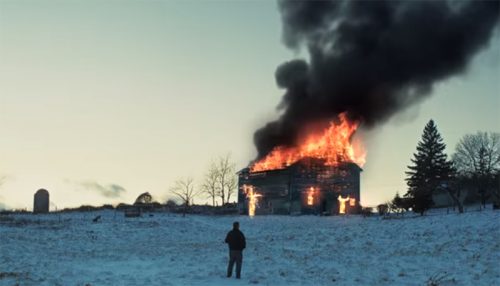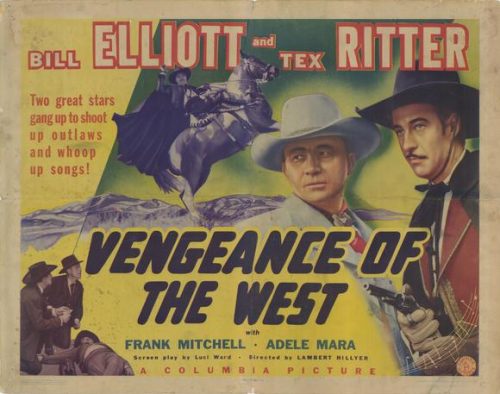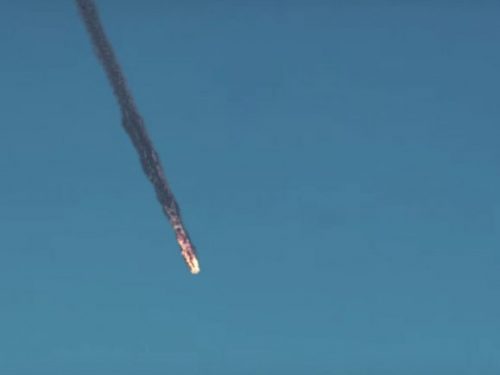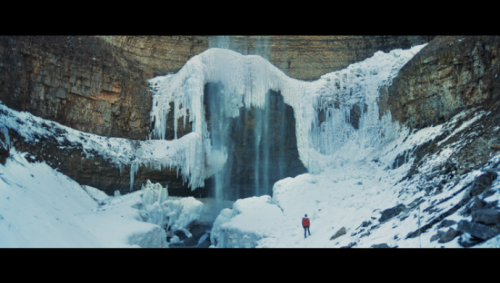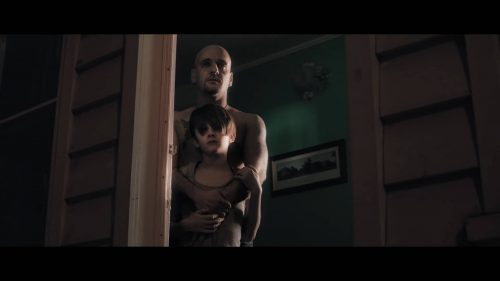.
G rainy video and tinny sound are not what one expects from a professional music video, but the opening to Wintersleep’s video for “Amerika,” the anthem from their most recent album, melds form and content to make for an explosive one-minute prelude. A pale, young, red-headed woman informs us flatly of the apocalyptic decline of the human race, in a clear rejection of humans by nature, animals and trees. Then, an anonymous child’s voice details how members of a family are interconnected even when far apart. These are clearly trying times.
This video, released on January 8 of 2016, foretells Trump’s election ten months later. Although he’d been campaigning for a while, Trump was only nominated as the Republican candidate in May of 2016, four months later. A Trump speech is the third voice added to the narrative at the 4:29 mark, talking about his “incredible country,” on a fifties television, in a house that is half finished, drywall unpainted, a scattering of furniture. The setting clearly situates us in grassroots America, Trump’s electoral base.
In a corner of the room is a vintage poster for a 1942 film, Vengeance of the West. In this classic Western made by famed B-Movie director Lambert Hillyer, a masked rider called “The Black Shadow” helps a young woman find out who murdered her father and stole his property. Trump’s appeals are to the average American, whose country has also seemingly been stolen away by various (literal) “dark figures.” Amerika’s “K” then is perhaps also foreshadowing the KKK’s support of Trump’s candidacy.
In the video, the repeated image and sound of a fireball rushing downward through a blue sky, but never reaching the ground, is followed closely by a burning barn, television reports of natural disasters, and right-wing religious figures raising their arms towards the cross in an otherwise empty church. Buildings burn throughout the video, as if in an enigmatic cleansing ritual while other religious symbols abound. It is only at the end of the video, from another a television report, that we discover that the fireball is a mysterious comet seemingly coming to destroy the planet.
The song lyrics, written by songwriter Paul Murphy, were inspired by Walt Whitman’s short poem “America” from his celebrated Leaves of Grass collection, first published in 1855 with 12 poems but revised throughout the poet’s life. The poem “America” was added to the so-called “deathbed” edition Whitman published in 1892 which contained 383 poems. Wintersleep’s song borrows the short poem’s verse, “Perennial with the Earth, with Freedom, Law and Love”: “What am I trying to find? Are you alive, oh my Amerika? Perennial with the Earth and freedom, love, and law, and life. Perennial with the earth, my freedom, I don’t wanna die.”
In the Wintersleep song, Amerika, intentionally spelled with a K, is reminiscent of the German spelling and Kafka’s unfinished first novel, Der Verschollene, The Disappeared One, titled Amerika when it was published in 1927. Much like this video, Kafka’s novel uses “a technique that traces and abstracts reality as it attempts to portray the deeper motivations that surge below the surface of daily life” (Shields Dix).
While the protagonist in Kafka’s story is looking for a way out, an escape from war-torn Europe, Wintersleep’s “Amerika” does not really offer much optimism for change. Extreme solitude and isolation are reinforced by images of people mostly alone, in different locations: churches, diners, dining rooms, and bedrooms. Some moments of the video recall Edward Hopper’s famous Nighthawks painting from 1942, its artificially bright interior contrasting with the dark lurking exterior. Here melancholia and solitude prevail.
In the video, along with the imminent menace of the comet, sickness, disease, and death are everywhere implied, in one figure’s cigarette and another’s oxygen mask, drugged-up young men wielding guns, drug dens, bloodied faces, and gangsters. Young lovers look bored and unmoved, lying in each other’s arms. There is no life or joy portrayed or concealed in any of the actors’ faces.
Yet nature prevails. Near the end of the film, the mix of the sound of the crashing water from the falls and the whooshing wind blend to remind us again of the of nature’s power. This reverence is mirrored on the pimply-faced adolescent’s expression as he observes the waterfalls. It is only after the cleansing water that the video shows us gentleness, echoing the song’s refrain “I don’t want to die”: a shirtless man takes his young child in his arms, a woman takes another by the hand, and the young lovers clasp each other’s hands, as if in preparation for the apocalyptic conclusion.
The band Wintersleep, originally formed in Halifax, Nova Scotia, and now based in Montreal, has been making music since 2001 and won a Juno in 2008. This song is from their most recent album, The Great Detachment, released in March 2016. The music video for Wintersleep’s “Amerika,” ranked in the top 50 videos of 2016 by Muchmusic, was written, directed and edited by award-winning Toronto filmmaker, Scott Cudmore. Co-recipient of the 2014 Arthur Lipsett Award, Cudmore is a member of Revolver Films.
–Sophie Lavoie
Works Cited:
Shields Dix, Douglas. “The Man Who Disappeared: Kafka Imagining Amerika” The Kafka Project by Mauro Nervi. http://www.kafka.org/index.php?aid=239
.
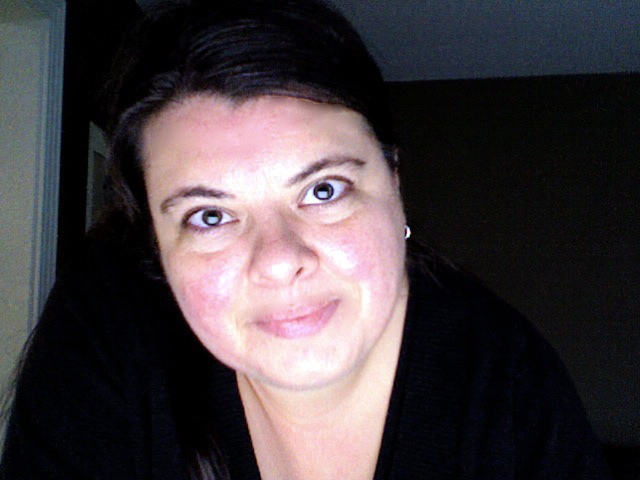
Sophie M. Lavoie conducts research in the areas of women’s writing and social change in Central America and the Caribbean. Her studies focus on women in contemporary Nicaragua during the first Sandinista era (1970-1990), but she is also interested in other revolutionary movements in the area, such as Cuba and El Salvador and in women’s writing in Latin America. Her current research project focuses on the link between women’s writing, empowerment, and revolutionary action during the Sandinista era in Nicaragua. She has published articles in Canadian Women’s Studies/les cahiers de la femme, Pandora, Centroamericana, Cahiers d’Etudes Romanes and Descant. She is Associate Professor at the University of New Brunswick in Fredericton, NB where she teaches Spanish and Latin American Cinema.
.
.
